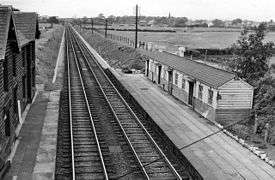Lancaster and Preston Junction Railway
| Lancaster & Preston Jn Rly | |||||||||||||||||||||||||||||||||||||||||||||||||||||||||||||||||||||||||||||||||||||||||||||||||||||||||||||
|---|---|---|---|---|---|---|---|---|---|---|---|---|---|---|---|---|---|---|---|---|---|---|---|---|---|---|---|---|---|---|---|---|---|---|---|---|---|---|---|---|---|---|---|---|---|---|---|---|---|---|---|---|---|---|---|---|---|---|---|---|---|---|---|---|---|---|---|---|---|---|---|---|---|---|---|---|---|---|---|---|---|---|---|---|---|---|---|---|---|---|---|---|---|---|---|---|---|---|---|---|---|---|---|---|---|---|---|---|---|
Legend | |||||||||||||||||||||||||||||||||||||||||||||||||||||||||||||||||||||||||||||||||||||||||||||||||||||||||||||
| |||||||||||||||||||||||||||||||||||||||||||||||||||||||||||||||||||||||||||||||||||||||||||||||||||||||||||||
The Lancaster and Preston Junction Railway was an early British railway company, in Lancashire, England. It later merged with the Lancaster and Carlisle Railway.
Construction
The Lancaster and Preston Junction Railway Company (L&PJR) was created by Act of Parliament on 5 May 1837, to link the towns of Preston and Lancaster. The company planned to build its Preston terminus at Dock Street (off Pitt Street), near the Lancaster Canal, in the expectation that the rival North Union Railway (NUR) line from Wigan would have its terminus close by. In fact, the North Union built its station 200 yards (200 m) away, just south of Fishergate, in what seems to have been a tactical move to get the L&PJR to contribute towards the cost of a short tunnel and connecting line between the two railways. This marked the start of protracted feuding between the two companies for years to come. Eventually a deal was struck for the L&PJR to use the North Union station.
The Lancaster terminus was on the modern-day South Road, just south of the Lancaster Canal and the southern end of Penny Street.
The line was twenty miles (32 km) long and built by Joseph Locke.[1] It opened on 25 June 1840, with a passenger service from the following day.
Chaos at Preston
Traffic was at first disappointing, due to competition from the parallel Lancaster Canal, which lowered the fares on its packet boats. The canal passed much closer to the town of Garstang than the railway.
The Manchester, Bolton and Bury Railway, which was already supplying the L&PJR's locomotives, agreed to work the line. This would have allowed direct trains from Manchester to Lancaster, in competition with the NUR line. The NUR retaliated by charging a toll to use the connecting line between the L&PJR and NUR. The L&PJR refused to pay a toll to use a line that it had partly paid for. Instead, it struck a deal with the Bolton and Preston Railway (BPR) to use its Maxwell House Station near Dock Street, from 1 January 1842 (some 18 months prior to completion of the BPR's own line).
Through trains between Lancaster and the south were levied a toll of 6d per passenger. Most passengers refused to pay, preferring to walk between the Maxwell House and North Union stations. The NUR refused to hold connections to allow time for passengers to walk and rebook, and advised northbound passengers to use the Lancaster Canal instead of the Lancaster railway.
The L&PJR, in increasing financial difficulties and unable to interest other railway companies, took the unprecedented step of leasing its line to a canal company, namely the Lancaster Canal. This occurred on 1 September 1842, after which the canal company withdrew its packet boat service.
In 1844, the Bolton and Preston Railway was amalgamated into the North Union Railway. Maxwell House Station thus came under the control of the NUR, and the L&PJR were denied access. Hapless passengers had to alight on the trackside at Dock Street, until later that year when L&PJR trains were allowed, once more, to use the North Union station in Preston. Maxwell House Station continued to be used for excursions.

Management vacuum
A dispute between the L&PJR and the Lancaster Canal Company led to an agreement that the Lancaster and Carlisle Railway (L&CR) would lease the line from 1 July 1846. However, shareholders reversed this decision, resulting in the mass resignation of all the directors. In the resulting confusion the L&CR and the canal company both ran their trains on the L&PJR line. The competition forced the canal company to reduce its train fares. The L&CR had its own station at Lancaster Castle and its line joined the L&PJR line a short distance south of the L&PJR station.
In 1847, the East Lancashire Railway (ELR) tried to lease the line, but was unable to establish the legality of any agreement in the absence of a board of directors.
On 21 August 1848 a Euston to Glasgow express train ran into the back of a stationary train at Bay Horse Station, resulting in one death and several serious injuries. The subsequent enquiry laid part of the blame on the uncertainty over the ownership of the line. Eventually the canal company accepted compensation to relinquish its use of the line. A struggle ensued between the L&CR and ELR, resulting in the L&CR leasing the line from 1 August 1849.
The L&PJR was amalgamated into the L&CR in 1859 and the L&CR was leased to the London and North Western Railway (LNWR), which later absorbed it in 1879.
Today
Today the line is the part of the West Coast Main Line between Preston and Lancaster. It was electrified by overhead gantry in the early 1970s.
The North Union station at Preston is now Preston railway station. The L&CR Lancaster Castle railway station is now known as Lancaster station. None of the intervening stations have survived.
Notes
| Wikimedia Commons has media related to Lancaster and Preston Junction Railway. |
- ↑ Lewis S (ed) (1848), "Lambley–Lancaster", A Topographical Dictionary of England, pp.6–17
References
- Greville, M.D.; Holt, G.O. (February 1960). "Railway Development in Preston—1" (PDF). The Railway Magazine. Vol. 106 no. 706. pp. 94–101, 125.
- Welch, M.S. (2004) Lancashire Steam Finale, Cheltenham : Runpast Publishing, ISBN 1-870754-61-1, p. 2.